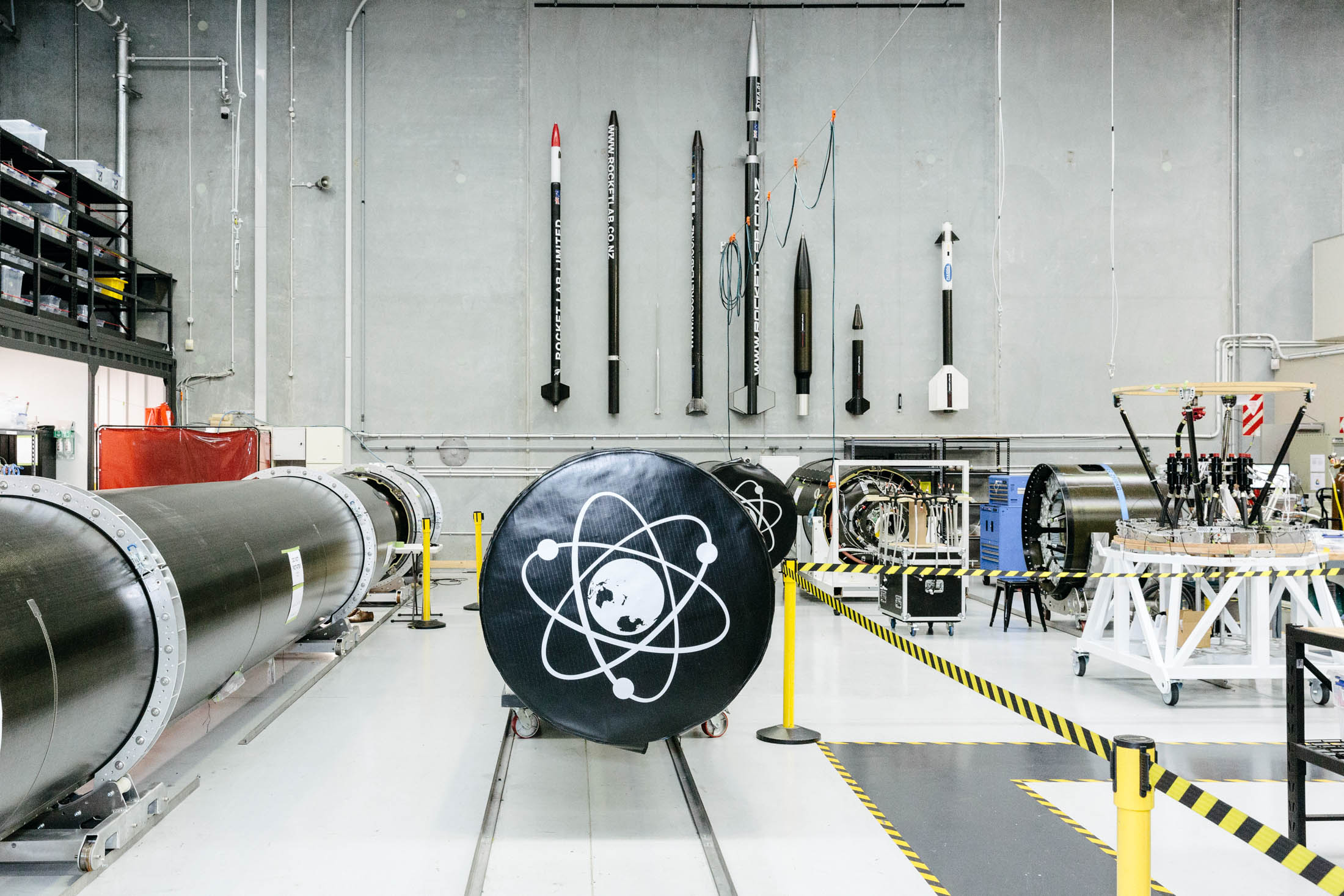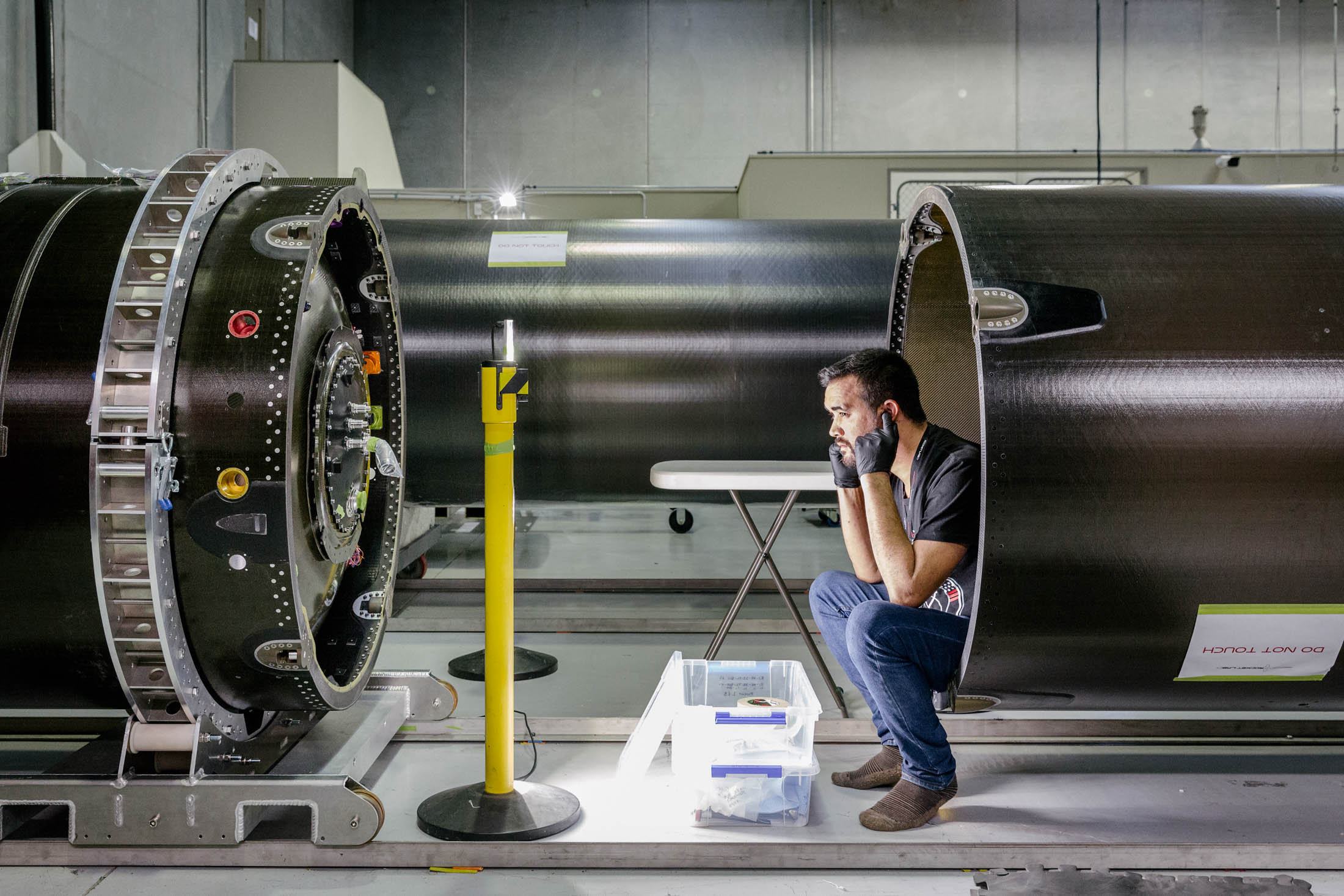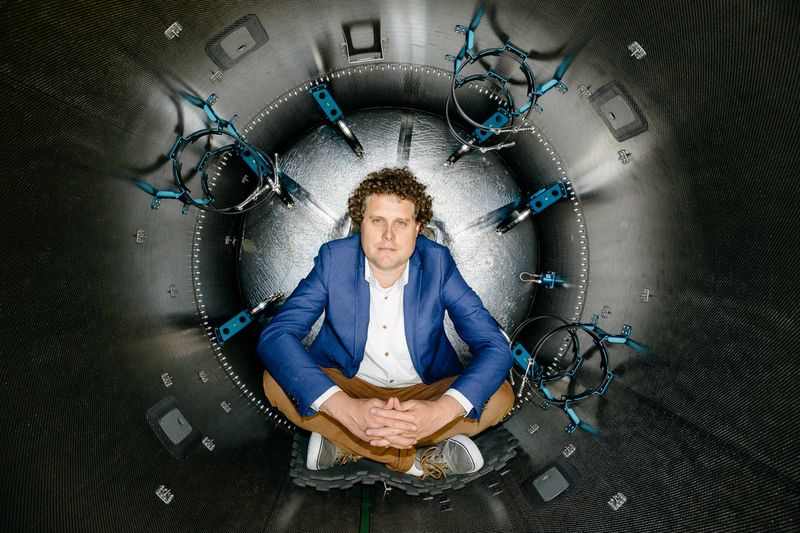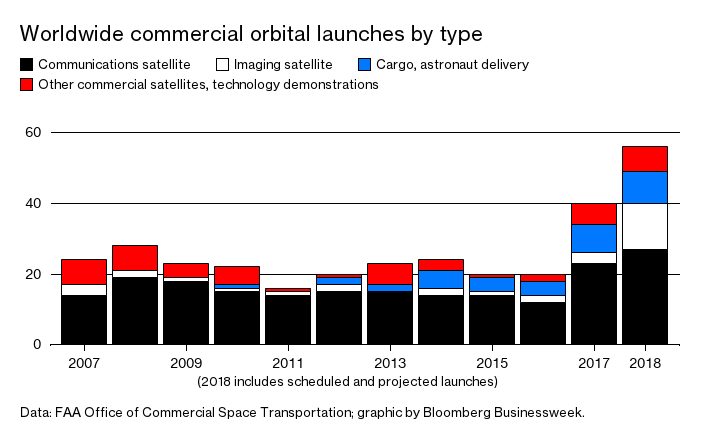New Zealander made a cheap carbon fiber rocket and will launch mini-satellites

Research Center Rocket Lab. Photo: Ian Teh for Bloomberg Businessweek
Gone are the days when space and rocket science were a matter of state. The era of private astronautics is coming, and it comes very quickly. Ilon Musk launches rockets almost every day and puts them back. And SpaceX is far from being the only private company that is launching satellites into orbit. Now in the world about 10 companies are working on making small rockets to launch mini-satellites.
An illustrative example is the start-up company Rocket Lab, which was founded by New Zealand entrepreneur and self-taught engineer Peter Beck. The rocket he created can drastically reduce the cost of launching small CubeSat satellites into orbit, Bloobmerg reports. The entrepreneur promises to take only $ 5 million for the launch - it is much cheaper than SpaceX $ 60 million, not to mention other competitors.
Rocket Lab has its own “cosmodrome”. It is a launching area of 8 × 8 meters, surrounded by meadows on a farm for sheep and cattle, which Rocket Lab has leased.

Space Rocket Lab in New Zealand. Photo: Ian Teh for Bloomberg Businessweek

The Rocket Lab in New Zealand is the only fully private cosmodrome in the world.
In May 2017, Rocket Lab performed the first test launch of an experimental Electron rocket. The launch was considered successful : the rocket, although it did not reach the target orbit, did not explode and sent telemetry.
In a few years, Peter Beck plans to launch 100 of these cheap rockets a year. This number of launches was made by the entire global aerospace industry in 2016.
Electron characteristics
Maximum load: 225 kg
Rated load: 150 kg
Steps: 2
Nominal solar synchronous orbit: 500 km
Height: 17 m (for comparison, the Falcon 9 is 70 m high)
Diameter: 1.2 m (from Falcon 9 - 3.7 m)
Second stage: 22 kN thrust (5,000 lb-force), 333 s
First stage: nine Rutherford engines, thrust with a separation of 162 kN (34,500 lbf), maximum thrust 192 kN (41,500 lb-force), 303 sec

Electron rocket. Photo: Ian Teh for Bloomberg Businessweek
The rocket uses advanced heat-resistant carbon fiber composites, special cryogenic valves and a special helium sealing system developed by Rocket Lab, FPGA flight control architecture, a specially designed engine with pumping oxygen and kerosene. Rutherford is the world's first oxygen-kerosene engine, all of the main components of which are printed on a 3D printer. Printing the entire engine takes 24 hours.
In general, Peter Beck is an interesting person, a real enthusiast. At 15, he cooked his own bike out of random parts, at 16 he went over the engine, the suspension, and completely restored the rusty Austin Mini, which he bought for $ 300, and at 18 studied the library in rocket fuel recipes - and then assembled his first rocket engine . Young Peter did not just assemble the engine, he attached it to the bike, put on a helmet and a red suit - and launched it in the local parking lot. He managed to accelerate to 145 km / h and, most importantly, then he was able to brake.
Perhaps this guy is even more fanatical than Ilon Musk.

Peter Beck Photo: Ian Teh for Bloomberg Businessweek
In addition to the Rocket Lab with the Electron rocket, other companies will soon enter the market with approximately the same rockets, including Vector Space Systems and the Virgin Orbit. All of them will compete in prices and will allow very cheap to bring small satellites into orbit.
Cheap mini satellites
CubeSat mini-satellites are popular with many customers due to their exceptional low cost. On February 15, 2017, from the launch site on Sriharikot Island in the Bay of Bengal, the PSLV-XL launch vehicle launched 104 satellites into orbit (a new world record for the number of satellites launched in one launch), including 88 Dove satellites (Flock-3P) of 30 × 10 × 10 cm for multichannel imaging of the earth's surface with a resolution of 3-5 m per pixel.

Flock-3P satellites
These small satellites of the CubeSat format were made by the American startup Planet Labs Inc. Customers are very different: hedge funds monitor the car traffic around supermarkets to measure consumer activity; farmers monitor crop ripening, activists monitor deforestation and refugee camps, spies monitor the construction of military bases, market analysts estimate the number of oil tanks in China’s reserves (satellite imagery recently showed that China’s reserves are 550 million barrels, not 400 million as the market believed) and so on. The satellites themselves are getting cheaper. CubeSat is almost completely assembled from parts from smartphones. It was from the details of the HTC Nexus One that the first prototype was assembled at the Ames Research Center (Ames Research Center) - at the California branch of NASA. Then, NASA engineers quit and founded the startup Planet Labs.
Now Planet Labs has mastered the 14th generation of Dove design, and at headquarters they can collect 20 such satellites per week.

Each 30 × 10 × 10 cm apparatus consists of 2013 parts: it is a small telescope in a gold-plated tape for thermal insulation, six lithium-ion batteries, a heating element for each, and several electronic circuit boards with integrated circuits. Each satellite takes 10,000 photos per day, covering an area of 2 million km². 40 GB of photos per day are downloaded through a network of stations that Planet Labs has built in Antarctica, Chile, Hawaii, Iceland and other places. Over the past few years, Planet Labs has already launched 233 mini-satellites, although a number of launches have been unsuccessful.
Private rockets dramatically reduce the cost of their launch into orbit. With such prices, soon almost every company can afford a small satellite that will shoot whatever it wants.

In connection with the cheaper satellites and the launch into orbit, analysts predict a sharp increase in the number of satellites being output in 2017 and 2018. A real satellite boom is expected, up to 400-500 launches per year. And cheap private rockets from Rocket Lab and other companies will come in handy.
All Articles